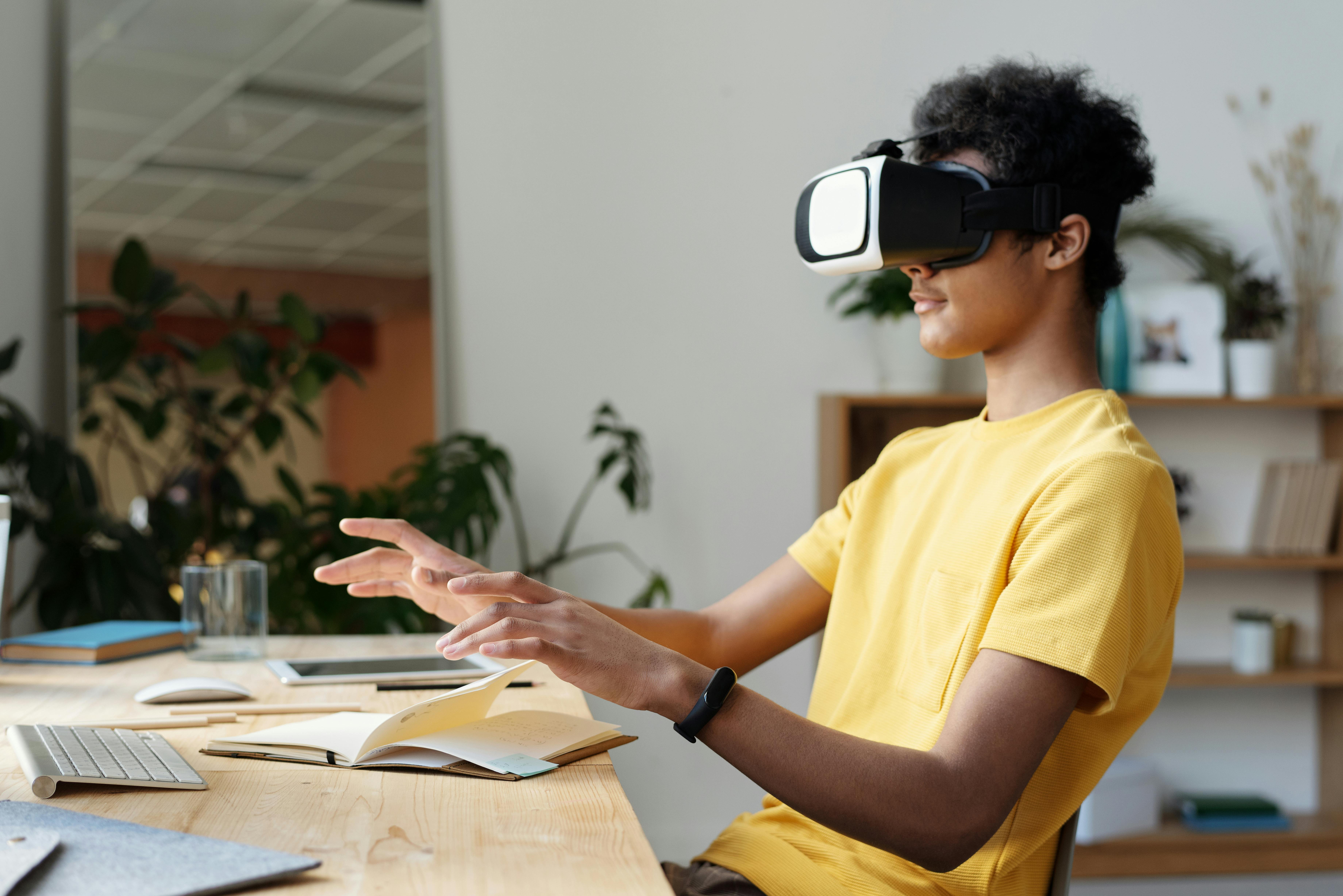
Introducing students to multiple curriculums can be a daunting task, especially from the perspective of one teacher. While new technology can help, the amount of it being integrated in the classroom can be a bit overwhelming.
Makerspaces have taken this into consideration and, even with the proliferation of AI, have put greater emphasis on interdisciplinary project-based learning, says Tim Needles educator and author of STEAM Power: Infusing Art Into Your STEM Curriculum.
“We’re at a time now where everyone’s talking about AI. It’s been the dominant conversation for sure,” says Needles. “But the other piece of AI is that because it can manage some of what we typically do in our classrooms, it puts a greater importance on some of the project-based learning type of work. It puts a greater emphasis on creativity.”
Using Enhanced Reality to Emphasize Creative Learning
The use of immersive technology – augmented and virtual reality – continues to grow in schools. Needles is no stranger to using enhanced reality formats to bring out the wonder and excitement associated with hands-on learning.
“We’re doing a lot of work with AR and VR,” he says. “Merge cubes are nice because it’s tactile. It’s a nice blend of the physical world and the digital world where students can actually manipulate things with their hands and get a better sense of them. Then we can move into things like poster creation with augmented reality so that you could decorate your classroom with some of the learning that you do with students.”
Augmented reality has a unique way of giving students a way to interact with their surroundings. But how does virtual reality work into the classroom in a similar fashion?
“One of the things that has been really effective in working with students from all different backgrounds is having a connective tool like a VR headset,” Needles says. “We’re currently using Oculus and we do a lot of work with NASA because of virtual experiences like taking a virtual trip to the International Space Station. Or students can explore the Anne Frank house if they wanted to.”
The Positive Impact These Forms of Education Can Have on Students
While AR and VR are great tools on their own, Needles says cross-curricular use is key.
“One of the most effective ways to use some of these tools is not by themselves, but to actually tie them into other kinds of curriculum as well,” he says. “Being a STEAM person, I like interdisciplinary stuff. So I work with teachers in different departments, and then also adding global learning with a couple global programs to cater to students in multiple countries.”
Bringing connectivity to students across the world can help people from different backgrounds find common ground in education. But are the students engaged?
“I think the engagement is one of the key reasons it’s so successful,” Needles says. “Students are so much more interested. It’s great to see a full class of students fully engaged because that’s always the aim.”
The Importance of Digital Literacy
Introducing new tools into the classroom is a wonderful way to get students more engaged in the educational process, but how do educators deal with the ever increasing task of teaching students how to interact with the tech and tools they use?
“This is something I’ve been discussing with a lot of colleagues now,” Needles says. “We’re testing a new program that specifically teaches literacy through a company called Digital Responsibility. It’s a micro course that students take as they enter high school. You could be strengthening student understanding of digital literacy by talking about it in individual classes, but the courses are a good way to create a blanket beginning point. With AI being as powerful and as important as it is, dealing with digital literacy, media literacy, and ethics is important.”
Students have many digital outlets when it comes to education and entertainment, but some educators make it a priority to encourage students to use their tools and programs in a responsible and ethical way.
Some of the Tools Needles Uses:
- Classlink
- Go Guardian
- Adobe
- Formative
- Quizizz
- EdPuzzle
- Discovery
Related articles:







